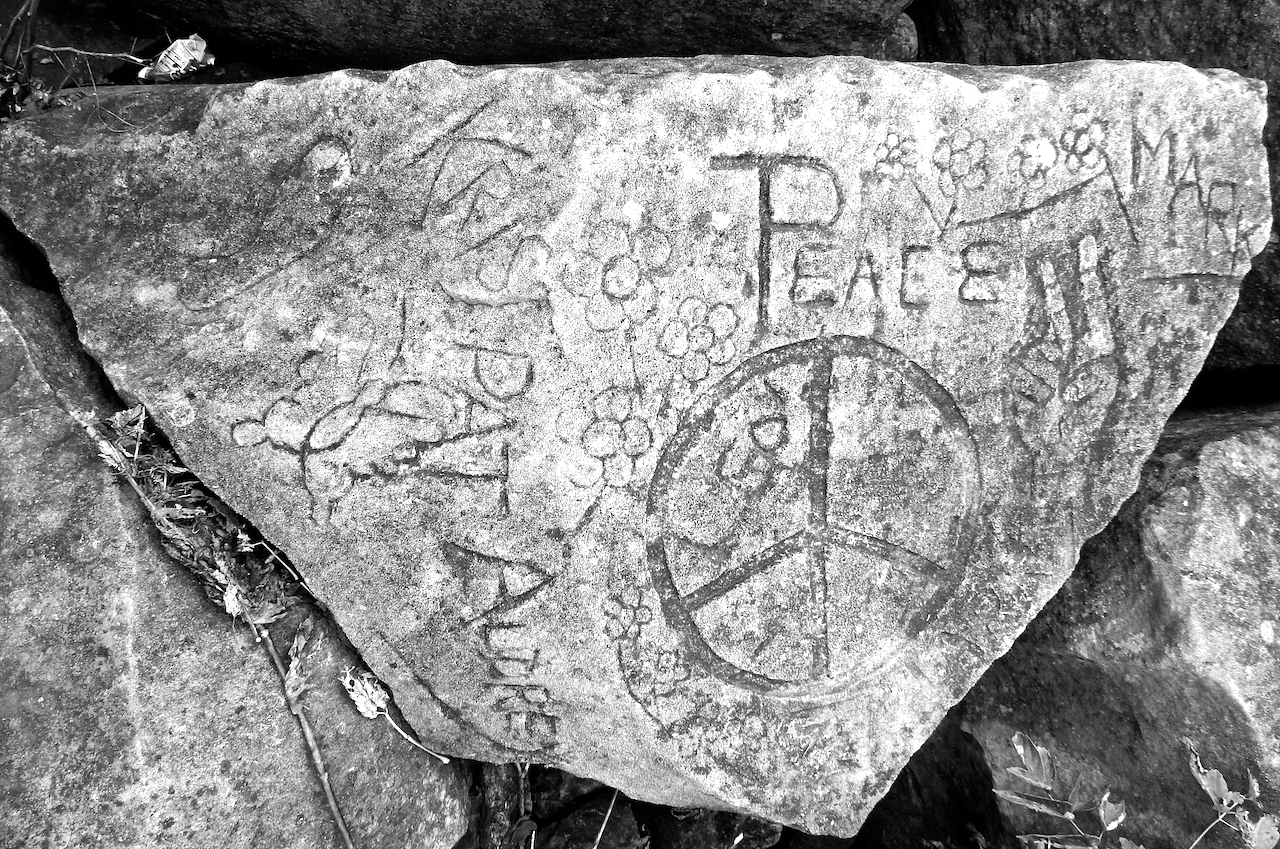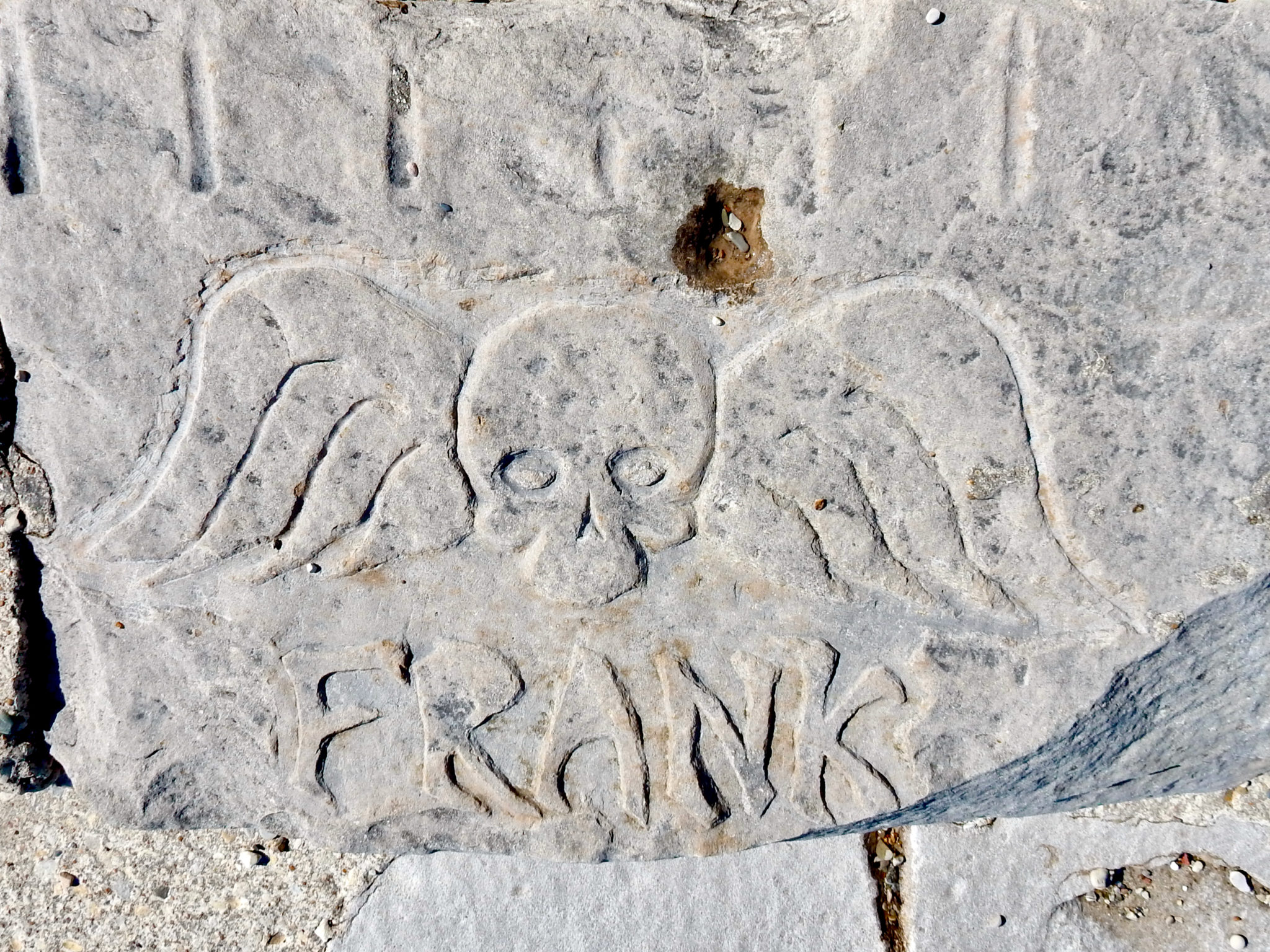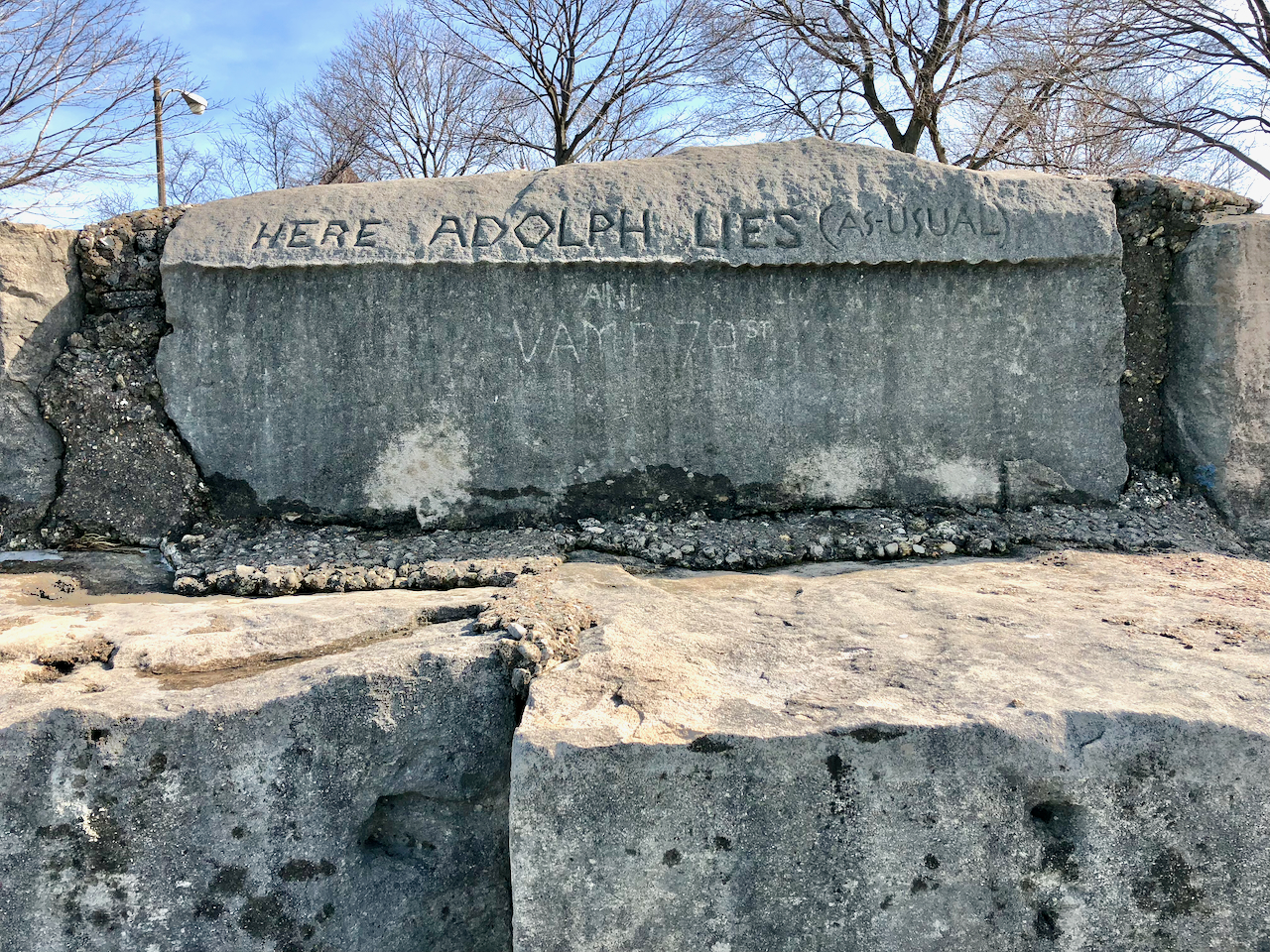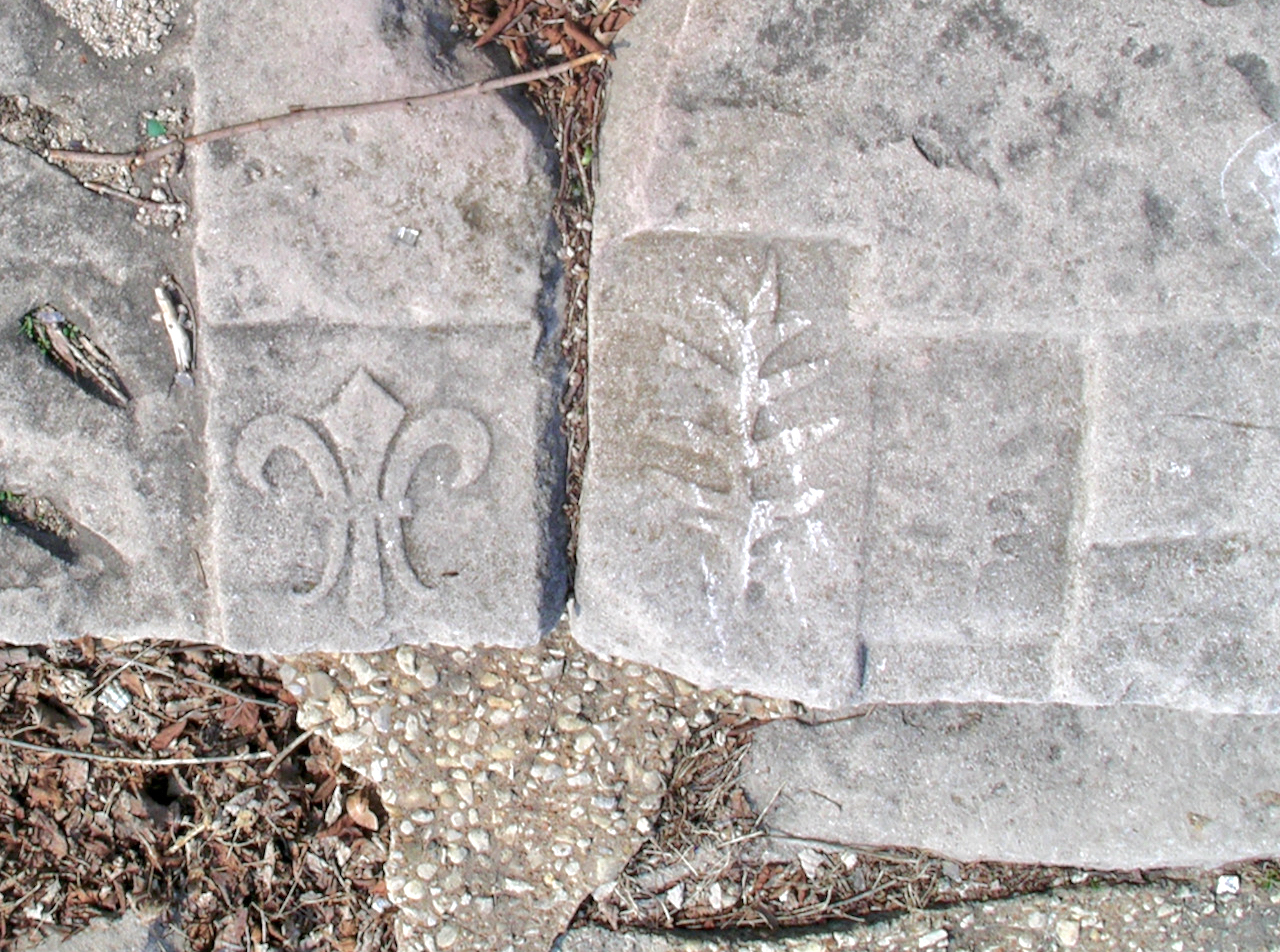Please accept this comment for the NEPA review of the Chicago Coastal Storm Risk Management study.
The historical limestone revetments and related structures at Morgan Shoal, Promontory Point and La Rabida have done more than protect the Chicago shoreline from erosion and flooding. They also have served as a canvas for thousands of mostly anonymous Chicagoans who have carved portraits and other images, names, messages and more into the rocks for almost a century.
I have spent the last few decades documenting the carvings on the revetments all along the Chicago shoreline, researching their history, tracking down and interviewing carvers, conducting walking tours (including at Promontory Point), doing numerous public presentations on the carvings, and, in 2021, publishing a book on the subject (Lakefront Anonymous: Chicago’s Unknown Art Gallery).
Effectively, the carvings on these rocks represent a spontaneous social history of Chicago’s life along the lake as well as combining to form a collective work of art that has gone largely unrecognized but is striking once you start noticing the thousands of carvings lining the shore.
These urban petroglyphs start near the Indiana state line and continue north to Osterman Beach at Hollywood Avenue. I have photographed the more than 6,000 that survive; thousands more were destroyed during the Corps’ shoreline protection work in the first two decades of the 2000s, from north of Promontory Point to Montrose Harbor. Although several hundred rocks from the old revetments were saved, and thus a smattering of the carvings in those locations, most of the thousands of blocks and the artwork on them were lost.

That cavalier treatment, which I believe was partly based on general ignorance of the carvings’ existence and importance, must not be repeated. This aggregation of modern rock carvings concentrated along a major urban shoreline is, based on my research, not duplicated anywhere else in the world. And Morgan Shoal, Promontory Point and La Rabida are major contributors to this unique resource. They each host significant surviving concentrations of carvings – more than 1,000 along Morgan Shoal, close to 600 at La Rabida and more than 500 lining Promontory Point.
The Morgan Shoal carvings include the oldest ones documented, the first of them dated June 1930, as well as several figurative and typographical carvings of significant artistic merit. Behind La Rabida Hospital there is an exceptionally dense concentration of carvings, some of them rich with historical references. There is also a line of rocks bearing carvings on an old revetment/breakwater that now sits about 10 feet offshore south of La Rabida. And at Promontory Point are some of the most whimsical historical carvings as well as some of the newest, with more than 20 executed this year added to the hundreds already there dating to back to the 1930s.
All these carvings are at risk from any shoreline protection plan that does not include preservation of the historical limestone. And all are at continuing risk from storm and erosion damage. At all three locations important carvings have either already fallen into the lake along with their host rocks or are in the process of falling.
So while it is important for the future of this art that shoreline rehabilitation proceed, it’s only hope of survival is that any rehabilitation retains as many of the limestone blocks as feasible, preferably in place, as opposed to sending them to the crusher or other dismal fates.
Retention of the limestone means different things at each location. Much of the revetment at Morgan Shoal is so decayed as to make preservation in place unworkable, so the best hope is that rocks bearing impactful carvings are identified and repurposed for seating or ornamental use. This was done to a limited extent along the Belmont Rocks north of Diversey Avenue, and to better effect at Fullerton Avenue, where the carvings were treated as an important feature worth saving and keeping visible in new configurations. Similarly, a number of blocks were saved in the Oakwood Beach vicinity and reused as seating and ornamental elements. At Morgan Shoal, in addition to the revetment features, there are rocks essentially installed as large paving stones adjacent to the 49th Street Beach House, flush with the ground and heavily carved. These also should be preserved in some form, either in place or nearby.
The rocks behind La Rabida hospital have suffered greatly in the last five years. Those nearest the lake are tumbling into the water (including one that hosts one of the finest of the lakefront carvings, a fully executed compass) and the rest show the ill effects of weather-driven shifts in the rocks. These rocks could be stabilized in place or repurposed nearby, as long as efforts necessary to preserve the carvings are undertaken. Similarly, the line of offshore rocks south of La Rabida should be surveyed for carvings and either preserved in place or relocated nearby. These rocks include one bearing one of the most unusual, masterful and historically interesting group of carvings to be found along the lake, made apparently by one hand between 1948 and 1953.
Of the three sites, Promontory Point is the one where the carvings, and the rocks that host them, can nearly all be preserved in place, per the plans formulated by the Promontory Point Conservancy. This allows the art to be seen as it was experienced and left by the artists and their friends over the decades since the Point was constructed in the 1930s. The carvings generally add to the historical character of the limestone revetments while also lining the Point with social history and artwork of substantial merit.
In all locations, for the carvings to be preserved, whether in place or nearby, their presence needs to be recognized and taken into account in the construction planning. This means inventorying the carvings, identifying the ones with sufficient merit to be preserved, and then taking great care when moving, resetting, or otherwise modifying their position. Even when efforts are made to save rocks with carvings, the process of moving them off their current location can result in their unintentional destruction, per the landscape architect on the Fullerton Avenue project. In addition, consideration of artistic merit needs to look beyond individual carvings to account for their impact in totality. While not every last carving may be worth preserving, some carvings grouped together become more than the sum of the parts.
Images and more information on the carvings are available at lakefrontanonymous.com and in my Lakefront Anonymous book – the first full-length study of the carvings, including their history as well as more than 200 images.
Thanks for the opportunity to comment on this important project.
William Swislow

Back to the Morgan Shoal And La Rabida Rocks Carvings index page



